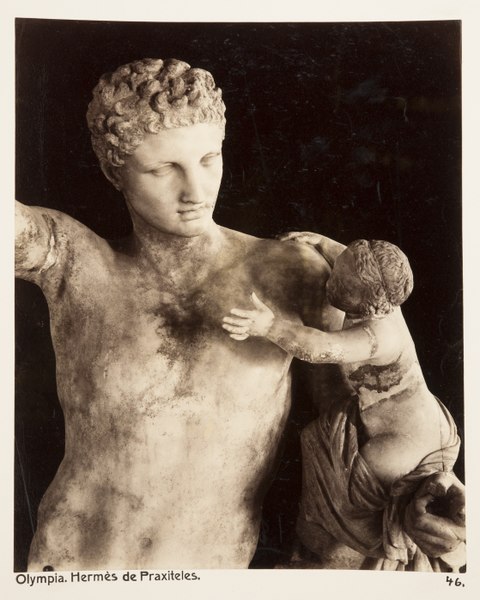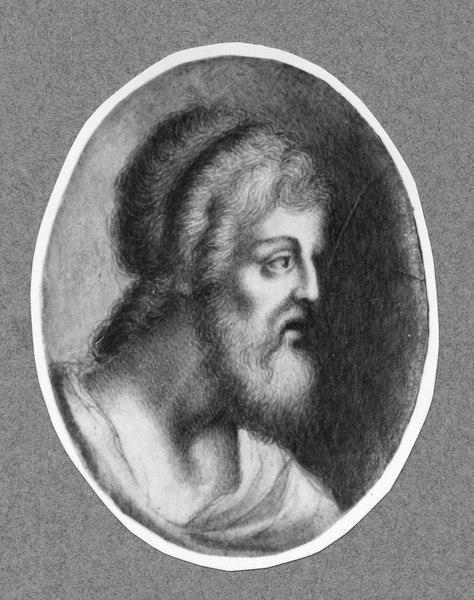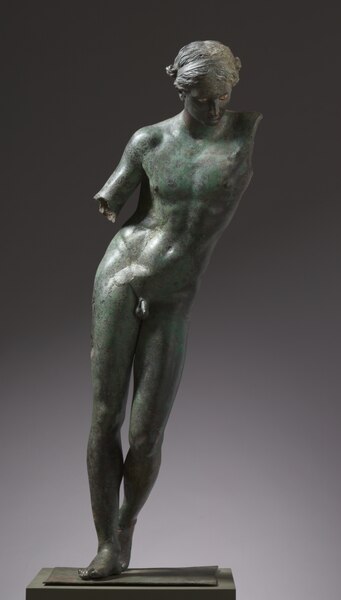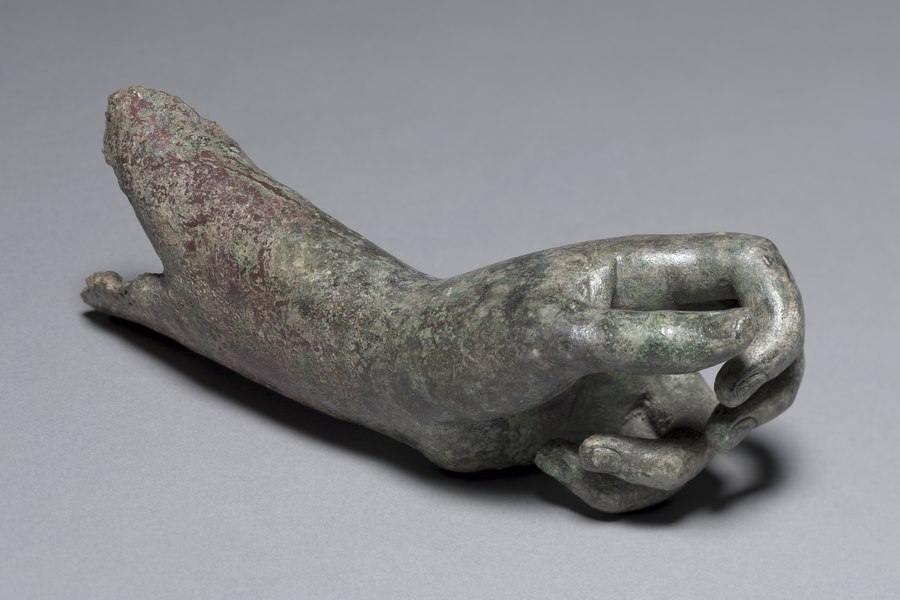1
title: <div class="fn"> <span ><span dir="ltr" lang="en"><i>Apollo the Python-Slayer <a href="https://www.wikidata.org/wiki/Q680075#P1476" title="Edit this at Wikidata"><img alt="Edit this at Wikidata" src="https://upload.wikimedia.org/wikipedia/commons/thumb/8/8a/OOjs_UI_icon_edit-ltr-progressive.svg/10px-OOjs_UI_icon_edit-ltr-progressive.svg.png" decoding="async" width="10" height="10" style="vertical-align: text-top" srcset="https://upload.wikimedia.org/wikipedia/commons/thumb/8/8a/OOjs_UI_icon_edit-ltr-progressive.svg/15px-OOjs_UI_icon_edit-ltr-progressive.svg.png 1.5x, https://upload.wikimedia.org/wikipedia/commons/thumb/8/8a/OOjs_UI_icon_edit-ltr-progressive.svg/20px-OOjs_UI_icon_edit-ltr-progressive.svg.png 2x" data-file-width="20" data-file-height="20"></a></i></span></span><div style="display: none;">title QS:P1476,en:"Apollo the Python-Slayer <a href="https://www.wikidata.org/wiki/Q680075#P1476" title="Edit this at Wikidata"><img alt="Edit this at Wikidata" src="https://upload.wikimedia.org/wikipedia/commons/thumb/8/8a/OOjs_UI_icon_edit-ltr-progressive.svg/10px-OOjs_UI_icon_edit-ltr-progressive.svg.png" decoding="async" width="10" height="10" style="vertical-align: text-top" srcset="https://upload.wikimedia.org/wikipedia/commons/thumb/8/8a/OOjs_UI_icon_edit-ltr-progressive.svg/15px-OOjs_UI_icon_edit-ltr-progressive.svg.png 1.5x, https://upload.wikimedia.org/wikipedia/commons/thumb/8/8a/OOjs_UI_icon_edit-ltr-progressive.svg/20px-OOjs_UI_icon_edit-ltr-progressive.svg.png 2x" data-file-width="20" data-file-height="20"></a>"</div> <div style="display: none;">label QS:Len,"Apollo the Python-Slayer <a href="https://www.wikidata.org/wiki/Q680075#P1476" title="Edit this at Wikidata"><img alt="Edit this at Wikidata" src="https://upload.wikimedia.org/wikipedia/commons/thumb/8/8a/OOjs_UI_icon_edit-ltr-progressive.svg/10px-OOjs_UI_icon_edit-ltr-progressive.svg.png" decoding="async" width="10" height="10" style="vertical-align: text-top" srcset="https://upload.wikimedia.org/wikipedia/commons/thumb/8/8a/OOjs_UI_icon_edit-ltr-progressive.svg/15px-OOjs_UI_icon_edit-ltr-progressive.svg.png 1.5x, https://upload.wikimedia.org/wikipedia/commons/thumb/8/8a/OOjs_UI_icon_edit-ltr-progressive.svg/20px-OOjs_UI_icon_edit-ltr-progressive.svg.png 2x" data-file-width="20" data-file-height="20"></a>"</div> <div style="display: none;">label QS:Lit,"Apollo di Cleveland"</div> <div style="display: none;">label QS:Lfr,"Apollon de Cleveland"</div> <div style="display: none;">label QS:Lnl,"Apollon van Cleveland"</div> <div style="display: none;">label QS:Lde,"Apollon von Cleveland"</div> <div style="display: none;">label QS:Les,"Apolo de Cleveland"</div> <div style="display: none;">label QS:Lca,"Apol·lo de Cleveland"</div> <div style="display: none;">label QS:Lda,"Apollon af Cleveland"</div> </div>
artist: <bdi>Attributed to <a href="https://en.wikipedia.org/wiki/en:Praxiteles" class="extiw" title="w:en:Praxiteles">Praxiteles</a> </bdi>
date: 4<sup>th</sup> century <a href="https://en.wikipedia.org/wiki/en:Ante_Christum_Natum" class="extiw" title="w:en:Ante Christum Natum">BC</a> <div style="display: none;">date QS:P,-350-00-00T00:00:00Z/7</div> <a href="https://www.wikidata.org/wiki/Q680075#P571" title="Edit this at Wikidata"><img alt="Edit this at Wikidata" src="https://upload.wikimedia.org/wikipedia/commons/thumb/8/8a/OOjs_UI_icon_edit-ltr-progressive.svg/10px-OOjs_UI_icon_edit-ltr-progressive.svg.png" decoding="async" width="10" height="10" style="vertical-align: text-top" srcset="https://upload.wikimedia.org/wikipedia/commons/thumb/8/8a/OOjs_UI_icon_edit-ltr-progressive.svg/15px-OOjs_UI_icon_edit-ltr-progressive.svg.png 1.5x, https://upload.wikimedia.org/wikipedia/commons/thumb/8/8a/OOjs_UI_icon_edit-ltr-progressive.svg/20px-OOjs_UI_icon_edit-ltr-progressive.svg.png 2x" data-file-width="20" data-file-height="20"></a>
source: own
license:CC0
 2
2title: <div class="fn"> <span >Fotografier</span> </div>
artist: <div class="fn value"> <bdi lang="">Unknown author</bdi> </div>
date: <bdi lang="">Unknown date<div style="display: none;">Unknown date</div></bdi>
source: HWY
credit: <a rel="nofollow" class="external text" href="http://emuseumplus.lsh.se/eMuseumPlus?service=ExternalInterface&module=literature&objectId=104604"> LSH 104604</a> (hm_dig18119)
description: <div class="description"> <div style="font-size:86%; background-color:#e0e0ee; padding: 0.3em; border:1px solid #aaa;"><i><b>Note: </b> For documentary purposes the original description has been retained. Factual corrections and alternative descriptions are encouraged separately from the original description.</i></div>Fotografi på Hermes och Dionysos gjord av <u style="background-color:yellow;" class="">praxiteles</u>.<br><b>Nyckelord</b>: Resealbum, Staty, Foto</div>
license:Public domain
 3
3title: Praxiteles, verksam på 300-talet f Kr, skulptör
artist: <div class="fn value"> <bdi lang="">Unknown author</bdi> </div>
date: <bdi lang="">Unknown date<div style="display: none;">Unknown date</div></bdi>
medium: en Watercolour and gouache on parchment sv Akvarell och gouache på pergament
current location: Institution:Nationalmuseum Stockholm
source: Nationalmuseum
credit: Nationalmuseum
license:Public domain
 4
4title: <div class="fn"> Apollo the Python-Slayer</div>
artist: <div class="fn value"> Praxiteles</div>
date: -340
medium: Bronze, copper and stone inlay
dimensions: Overall: 150 x 50.3 x 66.8 cm (59 1/16 x 19 13/16 x 26 5/16 in.)
current location: institution:Cleveland Museum of Art
source: https://clevelandart.org/art/2004.30.a
credit: <a rel="nofollow" class="external free" href="https://clevelandart.org/art/2004.30.a">https://clevelandart.org/art/2004.30.a</a>
description: <div class="description"> Although <u style="background-color:yellow;" class="">praxiteles</u> was more successful, and therefore more famous for his marble sculptures, he nevertheless also created very beautiful works in bronze. He made a youthful Apollo called the Sauroktonos (Lizard-Slayer), waiting in ambush for a creeping lizard, close at hand, with an arrow. -Pliny the Elder, 1st century ad This statue of the Apollo Sauroktonos may be the one Pliny the Elder saw in the 1st century ad. The complete sculpture most likely showed the young god pulling back a slender laurel tree with his raised left hand, while holding an arrow at waist level with his right, poised to strike the lizard creeping up the tree. Two Roman marble copies preserve the complete composition: one in the Louvre, the other in the Vatican. The museum's sculpture is the only known life-size bronze version of the Apollo Sauroktonos. Technical features such as the way the sculpture was cast and repaired in antiquity, the copper inlays of the lips and nipples, and the stone insert for the right eye (the left is a restoration) are consistent with a date in the 4th century bc. However, technically it may have been possible to produce such a work in the Hellenistic period. The Apollo Sauroktonos is thought to have been created by <u style="background-color:yellow;" class="">praxiteles</u> about 350 bc. Androgynous sensuality and languid, gracefully curved poses are hallmarks of his style. The finest large classical Greek statues were bronzes, but few have survived. If this sculpture is a product of <u style="background-color:yellow;" class="">praxiteles</u>' workshop, it is the only large Greek bronze statue that can be attributed to a Greek sculptor. <u style="background-color:yellow;" class="">praxiteles</u> was widely popular in his day. His famous Aphrodite of Cnidus (late 360s bc) introduced the life-size nude female figure to Western art.</div>
license:CC0
 5
5title: <div class="fn"> Apollo the Python-Slayer</div>
artist: <div class="fn value"> Praxiteles</div>
date: c. 350 BC
medium: Bronze, copper and stone inlay
dimensions: Overall: 150 x 50.3 x 66.8 cm (59 1/16 x 19 13/16 x 26 5/16 in.)
current location: institution:Cleveland Museum of Art
source: https://clevelandart.org/art/2004.30
credit: <a rel="nofollow" class="external free" href="https://clevelandart.org/art/2004.30">https://clevelandart.org/art/2004.30</a>
description: <div class="description"> This bronze sculpture of Apollo formerly known as "Sauroktonos," or lizard-slayer, is attributed to the renowned Greek sculptor <u style="background-color:yellow;" class="">praxiteles</u>. The survival of an original bronze sculpture attributed to a known artist in ancient Greece is extraordinarily rare. This sculptor is otherwise known only from Roman marble copies of his works.</div>
license:CC0
 6
6title: <div class="fn"> Apollo the Python-Slayer</div>
artist: <div class="fn value"> Praxiteles</div>
date: c. 350 BC
medium: Bronze, copper and stone inlay
dimensions: Overall: 25.9 x 8.8 x 8.7 cm (10 3/16 x 3 7/16 x 3 7/16 in.)
current location: institution:Cleveland Museum of Art
source: https://clevelandart.org/art/2004.30.b
credit: <a rel="nofollow" class="external free" href="https://clevelandart.org/art/2004.30.b">https://clevelandart.org/art/2004.30.b</a>
description: <div class="description"> Since antiquity <u style="background-color:yellow;" class="">praxiteles</u>'s masterpiece has been known as “Sauroktonos” (Lizard-Slayer). Pliny the Elder almost certainly saw the bronze original in Rome in the first century AD. He described a young Apollo about to stab a lizard with an arrow. Roman marble copies seemed to support this identification because they included lizards clinging to thick tree trunks. Until the acquisition of the only known bronze version by the Cleveland Museum of Art in 2004, there was no reason to question Pliny's epithet. <br><br>The Cleveland Apollo's “lizard,” which is probably original to the sculpture, is not a lizard at all. It combines the body of a snake with strangely formed limbs of varying sizes joined asymmetrically to the body. Its disordered anatomy identifies it as an agent of chaos from the world of myth. It is most likely the Python, son of Mother Earth, who Apollo must slay to become the presiding deity at the Delphi sanctuary. The Cleveland Apollo can therefore be called a Python-Slayer, and “Sauroktonos” was perhaps a popular nickname for the famous <br>bronze original.</div>
license:CC0
 7
7title: <div class="fn"> Apollo the Python-Slayer</div>
artist: <div class="fn value"> Praxiteles</div>
date: c. 350 BC
medium: Bronze, copper and stone inlay
dimensions: Overall: 14.8 x 9.4 x 3.6 cm (5 13/16 x 3 11/16 x 1 7/16 in.)
current location: institution:Cleveland Museum of Art
source: https://clevelandart.org/art/2004.30.c
credit: <a rel="nofollow" class="external free" href="https://clevelandart.org/art/2004.30.c">https://clevelandart.org/art/2004.30.c</a>
description: <div class="description"> Although <u style="background-color:yellow;" class="">praxiteles</u> was more successful, and therefore more famous for his marble sculptures, he nevertheless also created very beautiful works in bronze. He made a youthful Apollo called the Sauroktonos (Lizard-Slayer), waiting in ambush for a creeping lizard, close at hand, with an arrow. -Pliny the Elder, 1st century ad This statue of the Apollo Sauroktonos may be the one Pliny the Elder saw in the 1st century ad. The complete sculpture most likely showed the young god pulling back a slender laurel tree with his raised left hand, while holding an arrow at waist level with his right, poised to strike the lizard creeping up the tree. Two Roman marble copies preserve the complete composition: one in the Louvre, the other in the Vatican. The museum's sculpture is the only known life-size bronze version of the Apollo Sauroktonos. Technical features such as the way the sculpture was cast and repaired in antiquity, the copper inlays of the lips and nipples, and the stone insert for the right eye (the left is a restoration) are consistent with a date in the 4th century bc. However, technically it may have been possible to produce such a work in the Hellenistic period. The Apollo Sauroktonos is thought to have been created by <u style="background-color:yellow;" class="">praxiteles</u> about 350 bc. Androgynous sensuality and languid, gracefully curved poses are hallmarks of his style. The finest large classical Greek statues were bronzes, but few have survived. If this sculpture is a product of <u style="background-color:yellow;" class="">praxiteles</u>' workshop, it is the only large Greek bronze statue that can be attributed to a Greek sculptor. <u style="background-color:yellow;" class="">praxiteles</u> was widely popular in his day. His famous Aphrodite of Cnidus (late 360s bc) introduced the life-size nude female figure to Western art.</div>
license:CC0
 8
8title: <div class="fn"> Apollo the Python-Slayer</div>
artist: <div class="fn value"> Praxiteles</div>
date: c. 350 BC
medium: Bronze, copper and stone inlay
dimensions: Overall: 150 x 50.3 x 66.8 cm (59 1/16 x 19 13/16 x 26 5/16 in.)
current location: institution:Cleveland Museum of Art
source: https://clevelandart.org/art/2004.30.a
credit: <a rel="nofollow" class="external free" href="https://clevelandart.org/art/2004.30.a">https://clevelandart.org/art/2004.30.a</a>
description: <div class="description"> Although <u style="background-color:yellow;" class="">praxiteles</u> was more successful, and therefore more famous for his marble sculptures, he nevertheless also created very beautiful works in bronze. He made a youthful Apollo called the Sauroktonos (Lizard-Slayer), waiting in ambush for a creeping lizard, close at hand, with an arrow. -Pliny the Elder, 1st century ad This statue of the Apollo Sauroktonos may be the one Pliny the Elder saw in the 1st century ad. The complete sculpture most likely showed the young god pulling back a slender laurel tree with his raised left hand, while holding an arrow at waist level with his right, poised to strike the lizard creeping up the tree. Two Roman marble copies preserve the complete composition: one in the Louvre, the other in the Vatican. The museum's sculpture is the only known life-size bronze version of the Apollo Sauroktonos. Technical features such as the way the sculpture was cast and repaired in antiquity, the copper inlays of the lips and nipples, and the stone insert for the right eye (the left is a restoration) are consistent with a date in the 4th century bc. However, technically it may have been possible to produce such a work in the Hellenistic period. The Apollo Sauroktonos is thought to have been created by <u style="background-color:yellow;" class="">praxiteles</u> about 350 bc. Androgynous sensuality and languid, gracefully curved poses are hallmarks of his style. The finest large classical Greek statues were bronzes, but few have survived. If this sculpture is a product of <u style="background-color:yellow;" class="">praxiteles</u>' workshop, it is the only large Greek bronze statue that can be attributed to a Greek sculptor. <u style="background-color:yellow;" class="">praxiteles</u> was widely popular in his day. His famous Aphrodite of Cnidus (late 360s bc) introduced the life-size nude female figure to Western art.</div>
license:CC0
 9
9title: <div class="fn"> <span ><span dir="ltr" lang="en"><i>Praxiteles Giving Phryne his Statue of Cupid <a href="https://www.wikidata.org/wiki/Q64517729#P1476" title="Edit this at Wikidata"><img alt="Edit this at Wikidata" src="https://upload.wikimedia.org/wikipedia/commons/thumb/8/8a/OOjs_UI_icon_edit-ltr-progressive.svg/10px-OOjs_UI_icon_edit-ltr-progressive.svg.png" decoding="async" width="10" height="10" style="vertical-align: text-top" srcset="https://upload.wikimedia.org/wikipedia/commons/thumb/8/8a/OOjs_UI_icon_edit-ltr-progressive.svg/15px-OOjs_UI_icon_edit-ltr-progressive.svg.png 1.5x, https://upload.wikimedia.org/wikipedia/commons/thumb/8/8a/OOjs_UI_icon_edit-ltr-progressive.svg/20px-OOjs_UI_icon_edit-ltr-progressive.svg.png 2x" data-file-width="20" data-file-height="20"></a></i></span></span><div style="display: none;">title QS:P1476,en:"Praxiteles Giving Phryne his Statue of Cupid <a href="https://www.wikidata.org/wiki/Q64517729#P1476" title="Edit this at Wikidata"><img alt="Edit this at Wikidata" src="https://upload.wikimedia.org/wikipedia/commons/thumb/8/8a/OOjs_UI_icon_edit-ltr-progressive.svg/10px-OOjs_UI_icon_edit-ltr-progressive.svg.png" decoding="async" width="10" height="10" style="vertical-align: text-top" srcset="https://upload.wikimedia.org/wikipedia/commons/thumb/8/8a/OOjs_UI_icon_edit-ltr-progressive.svg/15px-OOjs_UI_icon_edit-ltr-progressive.svg.png 1.5x, https://upload.wikimedia.org/wikipedia/commons/thumb/8/8a/OOjs_UI_icon_edit-ltr-progressive.svg/20px-OOjs_UI_icon_edit-ltr-progressive.svg.png 2x" data-file-width="20" data-file-height="20"></a>"</div> <div style="display: none;">label QS:Len,"Praxiteles Giving Phryne his Statue of Cupid <a href="https://www.wikidata.org/wiki/Q64517729#P1476" title="Edit this at Wikidata"><img alt="Edit this at Wikidata" src="https://upload.wikimedia.org/wikipedia/commons/thumb/8/8a/OOjs_UI_icon_edit-ltr-progressive.svg/10px-OOjs_UI_icon_edit-ltr-progressive.svg.png" decoding="async" width="10" height="10" style="vertical-align: text-top" srcset="https://upload.wikimedia.org/wikipedia/commons/thumb/8/8a/OOjs_UI_icon_edit-ltr-progressive.svg/15px-OOjs_UI_icon_edit-ltr-progressive.svg.png 1.5x, https://upload.wikimedia.org/wikipedia/commons/thumb/8/8a/OOjs_UI_icon_edit-ltr-progressive.svg/20px-OOjs_UI_icon_edit-ltr-progressive.svg.png 2x" data-file-width="20" data-file-height="20"></a>"</div> </div>
artist: <bdi><a href="https://en.wikipedia.org/wiki/en:Angelica_Kauffman" class="extiw" title="w:en:Angelica Kauffman">Angelica Kauffman</a> </bdi>
date: 1794 <a href="https://www.wikidata.org/wiki/Q64517729#P571" title="Edit this at Wikidata"><img alt="Edit this at Wikidata" src="https://upload.wikimedia.org/wikipedia/commons/thumb/8/8a/OOjs_UI_icon_edit-ltr-progressive.svg/10px-OOjs_UI_icon_edit-ltr-progressive.svg.png" decoding="async" width="10" height="10" style="vertical-align: text-top" srcset="https://upload.wikimedia.org/wikipedia/commons/thumb/8/8a/OOjs_UI_icon_edit-ltr-progressive.svg/15px-OOjs_UI_icon_edit-ltr-progressive.svg.png 1.5x, https://upload.wikimedia.org/wikipedia/commons/thumb/8/8a/OOjs_UI_icon_edit-ltr-progressive.svg/20px-OOjs_UI_icon_edit-ltr-progressive.svg.png 2x" data-file-width="20" data-file-height="20"></a>
source: https://risdmuseum.org/art-design/collection/praxiteles-giving-phryne-his-statue-cupid-59008
credit: <a rel="nofollow" class="external free" href="https://risdmuseum.org/art-design/collection/praxiteles-giving-phryne-his-statue-cupid-59008">https://risdmuseum.org/art-design/collection/praxiteles-giving-phryne-his-statue-cupid-59008</a>
license:Public domain
 10
10title: <div class="fn"> <i>Venus of Cnidos, by Praxiteles </i> </div>
artist: <div class="fn value"> George Childs after John Flaxman</div>
date: published 1829
medium: lithograph [proof before letters]
current location: Institution:National Gallery of Art
source: https://purl.org/nga/collection/artobject/59447 Template:NGADC
credit: This file was donated to Wikimedia Commons as part of a project by the <a href="//commons.wikimedia.org/wiki/Commons:NGA" title="Commons:NGA">National Gallery of Art</a>. Please see the Gallery's <a rel="nofollow" class="external text" href="https://images.nga.gov/en/page/openaccess.html">Open Access Policy</a>.
license:CC0





